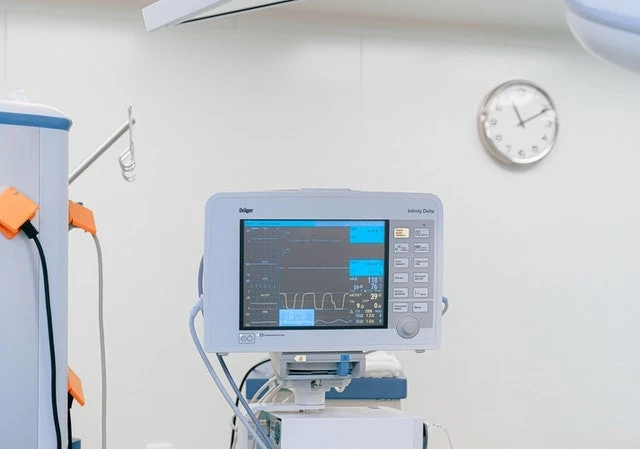Medical device companies: Is your real estate strategy helping you grow?
Add bookmarkAll signs point to growth in the year ahead for the medical device sector.
Moody’s recently upgraded its outlook for the industry from stable to positive, citing innovative pipelines, synergies from acquisitions and emerging market growth. As competitive and pricing pressures intensify, more medical device companies are turning to a new source of hidden value to give them an advantage: real estate.
To extract more value from real estate investments, we anticipate that leading medical device companies will increasingly examine their real estate portfolios with three perspectives in mind:
Improving operational efficiencies
Mergers and acquisitions (M&A) have been active in recent years as medical device companies seek ways to achieve efficiencies and gain access to new markets and innovations. While fewer deals closed in 2017 than in the year prior, deal values were up. Now, the focus will be on realizing the synergies of those mergers—and real estate is a pivotal point.
Once a merger is completed, some companies are recognizing that the real estate portfolio of the combined company should be a major priority with regard to value creation. When Merck acquired Schering-Plough in 2009, the corporate real estate team reduced the combined companies’ occupancy costs by $300 million within three years. Medtronic hoped to achieve $850 million in synergies within the first three years of its acquisition of Covidien by cutting expenses like redundant office space and back-office personnel and optimizing distribution systems and supply chains.
Evaluating the real estate portfolio to identify the right places for consolidation must be done with care. Operational costs are only one of numerous factors to weigh. Big picture thinking is critical. If duplicative facilities are in attractive locations, can one be used for another purpose? Are employee retention rates higher at certain facilities? What can be learned from that? Could you shift employees across multiple buildings into a more state-of-the-art campus?
Following the Schering-Plough acquisition, Merck used its corporate real estate goal of building long-term productivity as a guide for its decisions. Instead of disposing of high-value sites that would generate short-term cost savings, it focused on creating highly efficient business and laboratory locations and workplaces.
Another opportunity for smart facilities consolidation? Agility in inventory management. According to Patrick Sweeney, MD, founder and chairman of ConnectSx, real estate decisions are being driven by proximity to shipping hubs. Memphis, for instance, is becoming a medical device cluster because it is home to significant FedEx shipping hub.
“A big concern for medical device companies right now is optimizing the inventory they have in the field and being able to move it around the country with ease to get as much product turned as possible with as little inventory in the field as possible,” said Sweeney. “The surgical trays are expensive and can be costly to ship, so finding ways to transfer product or restock quickly without incurring significant shipping costs is an increasingly important factor in real estate decisions.”
Outsourcing facility management is another strategy medical device companies are using to become more agile and realize greater efficiencies from their real estate. While the life sciences sector historically was reluctant to outsource sensitive “beyond the yellow line” facility management operations, the practice is becoming increasingly common as companies become laser-focused on innovation. Today, some medical device companies are turning to seasoned facility management providers with deep experience in managing sensitive and complex production and R&D environments, as well as office workplaces.
One motivation is compliance risk. A qualified real estate services provider can apply leading practices for maintaining clean rooms, keeping valuable inventory and intellectual property secure and keeping facility compliance procedures in line with regulatory developments.
Energy and sustainability savings is another motivator. A typical building can waste as much as one-third of its energy through inefficient equipment or improperly functioning machinery. An outsourced facility management provider can employ the latest technologies and skilled staff to continually monitor for problems and implement improvements, leading to cost savings and a reduced carbon footprint.
Want more? Guide to a greener pharmaceutical supply chain
How can we attract the talent we need for future growth?
Medical device companies are on the hunt for a high-demand talent pool: researchers, data scientists and engineers. To find them, they are setting up shop near the source. Cities like Boston, San Francisco and Seattle are hot spots for healthcare, technology and life sciences, with prominent healthcare organizations, research institutions and leading universities serving as a magnet for talent.
Companies aren’t settling on one location, either. They are placing their bets across multiple markets. Big names are investing in small R&D labs inside several major markets while keeping other employees at less expensive properties. For example, Amgen relocated 100 R&D employees from its headquarters in Thousand Oaks, California, to sites in South San Francisco and Boston. Being in the center of the action can have a significant influence not only on talent and innovation, but also on customer relationships.
What can we do to get more customer-centric?
As medical device companies push to make their business models and innovations more customer-centric, real estate strategies are getting a fresh look. In the race to get to market, being physically close to the customer can make a big difference. Take a look at a recent move by Johnson & Johnson’s Medical Device Companies (JJMDC) business. In November 2017, it opened a Center for Device Innovation at Texas Medical Center in Houston, which facilitates collaboration between the JJMDC and a leading medical center. The Center for Device Innovation gives the medical center access to emerging medical technologies and gives JJMDC a place to rapidly prototype and test new developments.
Time for a tune-up
Tight alignment between the real estate strategy and corporate goals is key to maximizing real estate investments. A well-planned future strategy provides a strong foundation upon which your business can scale appropriately, build a strong customer base and secure the best talent.













